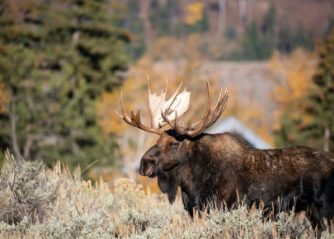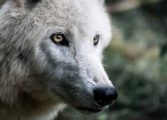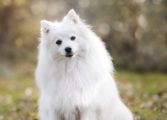Lajka hund – En mångfacetterad ras med rik historia och unika egenskaper

Introduction:
Lajka dogs, also known as Laika dogs, are a diverse group of breeds with a rich history and unique characteristics. In this article, we will provide a comprehensive overview of lajka dogs, including an in-depth presentation of the breed, popular types, quantitative measurements, differences between lajka dogs, and a historical analysis of their advantages and disadvantages.
An Overview of Lajka Dogs

Lajka dogs are a group of working dogs that originate from Russia and other regions in the Arctic. They were primarily bred for specific purposes such as hunting, herding, sled-pulling, and guarding. Lajka dogs are known for their versatility and adaptability to harsh climates.
Presentation of Lajka Dogs
Lajka dogs are classified into several types, each with its own distinct characteristics and popularity. The most well-known types of lajka dogs include:
1. West Siberian Laika: This type of lajka dog is known for its strength, endurance, and versatility. They are often used for hunting large game, such as bears and boars.
2. East Siberian Laika: Originally bred for hunting and pulling sleds, the East Siberian Laika is valued for its intelligence and keen sense of smell. They are often used for search and rescue operations.
3. Karelian Bear Dog: This lajka breed is famous for its courage and tenacity when facing large predators, such as bears and wolves. They are commonly used for hunting and bear deterrence.
4. Russo-European Laika: Developed through crossbreeding, this lajka type is a versatile working dog used for hunting and herding. They are highly energetic and require ample exercise.
Quantitative Measurements of Lajka Dogs
When evaluating lajka dogs, various quantitative measurements give insight into their physical attributes and capabilities. Some key measurements include:
1. Height and Weight: Lajka dogs typically range in height from 20 to 24 inches (50 to 60 cm) and weigh between 40 to 60 pounds (18 to 27 kg).
2. Lifespan: On average, lajka dogs have a lifespan of 12 to 15 years, depending on factors such as genetics, diet, and overall health care.
3. Speed and Endurance: Lajka dogs are known for their agility, speed, and stamina. They can cover long distances at a moderate pace, making them excellent for sled-pulling and endurance activities.
Differences Between Lajka Dogs
Although all lajka dogs share common characteristics, there are notable differences among the various types. Some factors that distinguish lajka dogs from each other include:
1. Appearance: Each lajka type has unique physical features such as coat color, size, and body structure. For example, the Karelian Bear Dog has a short, dense coat, while the East Siberian Laika has a thicker double coat.
2. Temperament: Lajka dogs differ in temperament as well. While some types, like the West Siberian Laika, are known for their friendly and sociable nature, others, like the Russo-European Laika, can be more reserved and aloof.
3. Working Abilities: Lajka dogs excel in various working roles, but their specialties may differ. For instance, the West Siberian Laika is particularly skilled in tracking and treeing game, while the East Siberian Laika has a strong herding instinct.
Historical Analysis of Advantages and Disadvantages
Throughout history, lajka dogs have provided unique advantages and faced certain challenges. Some key historical advantages include:
1. Adaptability: Lajka dogs have proven their adaptability to extreme weather conditions, making them invaluable in Arctic regions.
2. Versatility: Lajka dogs can perform multiple tasks, serving as hunting companions, sled pullers, and reliable guard dogs.
However, there are also historical disadvantages associated with lajka dogs:
1. Predator Instincts: Due to their strong prey drive, lajka dogs may not easily coexist with small pets or livestock unless trained and socialized properly.
2. Exercise Needs: Lajka dogs have high energy levels and require ample exercise to prevent behavioral issues.
Historically, responsible breeding and training have helped minimize these disadvantages while emphasizing the advantages of lajka dogs.
Conclusion:
In conclusion, lajka dogs are a fascinating group of working dogs with a rich history and diverse characteristics. From their origins in Russia and the Arctic to their different types, quantitative measurements, and distinctive qualities, lajka dogs have continued to captivate us with their adaptability and working abilities. However, it is important to acknowledge and address potential challenges associated with their predatory instincts and exercise needs. With responsible breeding, training, and care, lajka dogs can make wonderful companions and excel in various working roles.
















































